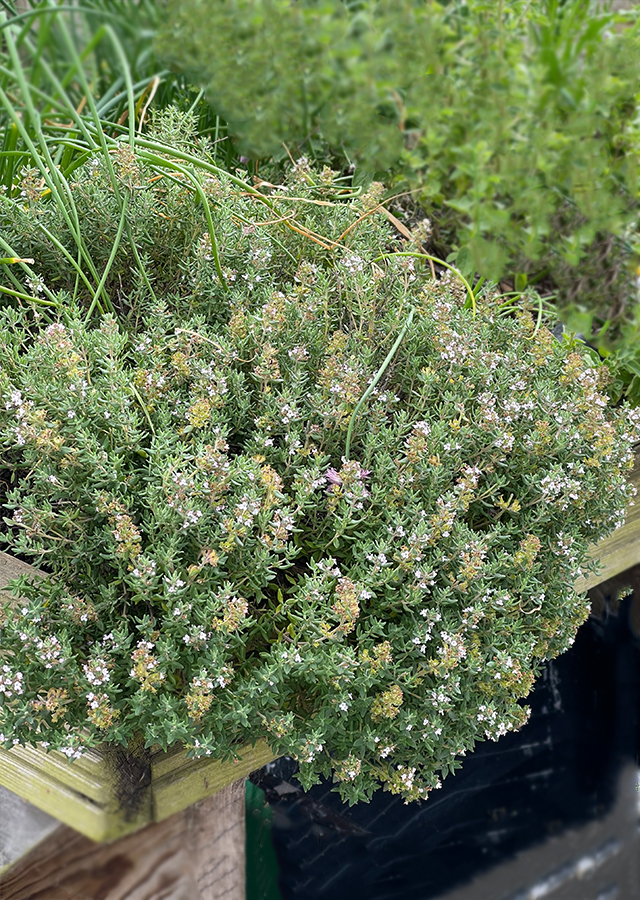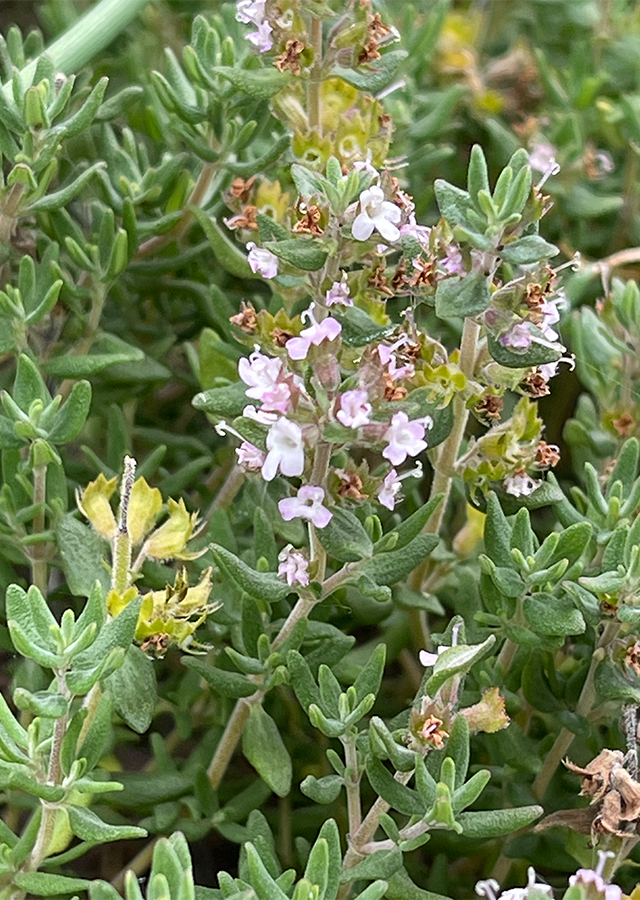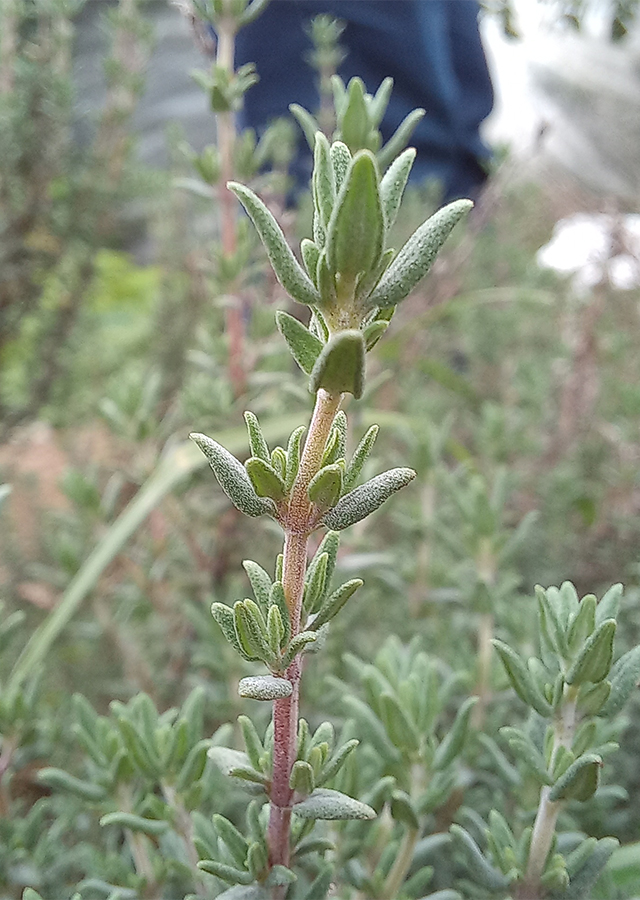Thyme
Thymus vulgaris L.
Lamiaceae
Location in our garden
Shading Area



Synonym
Origanum thymus Kuntze
Thymus collinus Salisb.
Habitus
Shrubs. An evergreen shrub that can grow up to 0.20 m tall
Part Used
Leaves
Growing Requirements
Full Sunshine
Habitat
Rocky Areas
Terrestrial
Overview
Thymus vulgaris is native to southern Europe, from Spain to Italy. It is commonly cultivated there as well as in most mild-temperate and subtropical climates, which include southern and central Europe. It is harvested from the wild for local use as a food, medicine and source of materials. The leaves are very aromatic. It is sometimes grown as an annual from seed when used for culinary purposes.
Vernacular Names
Tomillo comun (Spanish), Thym des jardins (French), Echter thymian (German), Pepolino (Italian), Tijm (Dutch), Timjan (Swedish)
Agroecology
Always found on clay or limestone soils, on dry slopes, rocks and maquis. Prefers a light, dry calcareous soil and a sunny position. Succeeds in dry soils, poor soils and tolerates drought once it is established.
Morphology
- Stems - erect. The base of the stem becomes woody over time.
- Leaves - paired leaves are linear to elliptic with entire leaf margin (3-8 mm long, 0.5-2.5 mm wide). Leaf surface is tomentose, being densely matted with soft hairs.
- Flowers - light purple flowers are tubular and 2-lipped. They are arranged in whorls along a spike inflorescence.
- Fruits - composed of 4 one-seeded nutlets which are brown and round (1 mm wide).
Cultivation
- Propagated by seeds - Seeds may take 14 – 21 days to germinate. Grow it in a sunny location and well-drained soil. Allow the soil between watering sessions to minimise root rot due to overwatering.
- By division, cuttings of young shoots, cuttings of half-ripe wood and layering.
Chemical Constituents
Thymol, carvacrol, terpenoids, flavonoid aglycones, flavonoid glycosides, phenolic acids.
Traditional Medicinal Uses
- It is very rich in essential oils and these are the active ingredients responsible for most of the medicinal properties. In particular, thyme is valued for its antiseptic and antioxidant properties, it is an excellent tonic and is used in treating respiratory diseases and a variety of other ailments.
- The plant is used internally in the treatment of dry coughs, whooping cough, bronchitis, bronchial catarrh, asthma, laryngitis, indigestion, gastritis and diarrhoea and enuresis in children.
- Externally, it is used in the treatment of tonsillitis, gum diseases, rheumatism, arthritis and fungal infections.
- Thyme has an antioxidant effect, thus regular use of this herb improves the health and longevity of individual body cells and therefore prolongs the life of the body.
- The whole herb is used in the treatment of digestive disorders, sore throats, fevers etc.
Part Used
Reference Sources
- Fern, Ken. Useful Tropical Plants. (2021). Thymus vulgaris. https://temperate.theferns.info/plant/Thymus+vulgaris. 17-12-21.
- Cabi. Thymus vulgaris. https://www.cabi.org/isc/datasheet/53795. 17-12-21.
- Flora & Fauna Web. Thymus vulgaris. https://www.nparks.gov.sg/florafaunaweb/flora/5/3/5393. 17-12-21.

